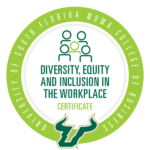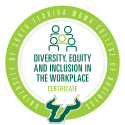Diversity in leadership is not just a buzzword or a trendy concept; it is a crucial aspect of building successful organizations. When leadership teams are diverse, they bring a wide range of perspectives, experiences, and ideas to the table. This diversity can lead to better decision-making, increased innovation, and improved problem-solving capabilities.
According to McKinsey & Company’s 2020 report, companies in the top quartile for gender diversity on executive teams were 25% more likely to have above-average profitability than companies in the fourth quartile. Similarly, for ethnic and cultural diversity, this likelihood jumps to 36%. Clearly, diversity isn’t just nice to have; it’s a driver of business success.
However, achieving diversity in leadership is not easy. Despite the clear benefits, the path to diverse leadership is riddled with challenges. A study by Harvard Business Review found that women and people of color are significantly underrepresented in leadership positions. They account for 40% and 13% of the U.S. population, respectively, yet hold only 8% and 3.2% of Fortune 500 CEO positions.
It requires real strategies and intentional efforts to foster diversity and inclusion within organizations. It is not enough to simply have one or two token individuals from underrepresented groups in leadership positions. True diversity requires a commitment to creating an inclusive culture where everyone has equal opportunities to succeed.

Understanding Tokenism: Why it’s Not Enough
Tokenism refers to the practice of including a small number of individuals from underrepresented groups in order to give the appearance of diversity. While tokenism may seem like a step in the right direction, it is not enough to create real change.
Tokenism has several limitations. First, it fails to address the underlying systemic barriers that prevent individuals from underrepresented groups from advancing into leadership positions. By simply placing a few individuals in leadership roles without addressing these barriers, organizations are not truly fostering diversity.
Second, tokenism can create a hostile environment for those who are tokenized. These individuals may feel pressure to represent their entire group and may face higher expectations or scrutiny than their peers. This can lead to feelings of isolation, imposter syndrome, and burnout.
The Benefits of Diverse Leadership Teams
Having diverse leadership teams brings numerous benefits to organizations. First and foremost, diverse teams bring a variety of perspectives and experiences to the decision-making process. This diversity of thought can lead to more innovative and creative solutions to problems.
Diverse leadership teams also have a better understanding of diverse markets and customer bases. They can bring unique insights and cultural knowledge that can help organizations better connect with their customers and tailor their products and services to meet their needs.
Furthermore, diverse leadership teams can improve employee engagement and retention. When employees see leaders who look like them and come from similar backgrounds, they are more likely to feel valued and included. This can lead to higher levels of job satisfaction and loyalty.

Identifying Barriers to Diversity in Leadership
There are several common barriers that prevent individuals from underrepresented groups from advancing into leadership positions. One of the main barriers is unconscious bias. Unconscious bias refers to the stereotypes and prejudices that individuals hold, often without even realizing it. These biases can influence hiring decisions, promotions, and opportunities for advancement.
Another barrier is the lack of representation and role models. When individuals from underrepresented groups do not see people who look like them in leadership positions, they may not believe that they have the same opportunities for advancement. This lack of representation can create a self-perpetuating cycle where individuals from underrepresented groups do not aspire to leadership positions.
Additionally, there may be systemic barriers within organizations that prevent individuals from underrepresented groups from advancing. These barriers can include limited access to mentorship and sponsorship opportunities, lack of flexible work arrangements, and biased performance evaluations.
It is crucial for organizations to identify these barriers and take steps to address them in order to foster diversity in leadership.
Strategies for Recruiting and Retaining Diverse Leaders
Recruiting and retaining diverse leaders requires a proactive approach. Organizations should implement strategies that go beyond traditional recruitment methods and actively seek out candidates from underrepresented groups.
One effective strategy is to partner with organizations that focus on developing diverse talent pipelines. By building relationships with these organizations, organizations can tap into a pool of qualified candidates from underrepresented groups.
Another strategy is to implement blind hiring practices. Blind hiring involves removing identifying information from resumes and applications, such as names and gender pronouns, to reduce the impact of unconscious bias in the hiring process.
Once diverse leaders are recruited, it is important to create an inclusive and supportive environment to retain them. This can be done through mentorship and sponsorship programs, employee resource groups, and flexible work arrangements.
Creating a Culture of Inclusion: Training and Development
Training and development play a crucial role in creating a culture of inclusion within organizations. It is important for leaders and employees to understand the value of diversity and inclusion and how it benefits the organization as a whole.
Training programs should focus on raising awareness of unconscious bias and providing tools and strategies for mitigating its impact. This can help individuals recognize their own biases and make more objective decisions.
Additionally, organizations should provide training on inclusive leadership practices. This can include topics such as effective communication across diverse teams, creating an inclusive work environment, and managing diverse talent.
Development opportunities should also be provided to individuals from underrepresented groups to help them advance into leadership positions. This can include mentorship programs, leadership development programs, and opportunities for stretch assignments.

Building Networks and Partnerships to Expand Diversity
Building networks and partnerships is crucial for expanding diversity in leadership. Organizations should actively seek out partnerships with external organizations that focus on diversity and inclusion.
These partnerships can provide access to a wider pool of diverse talent, as well as opportunities for collaboration and knowledge sharing. By working together with external organizations, organizations can learn from best practices and gain new perspectives on diversity and inclusion.
Additionally, building internal networks within organizations is important for fostering diversity. Employee resource groups can provide a platform for individuals from underrepresented groups to connect with each other, share experiences, and support each other’s professional development.
Measuring Progress: Metrics for Diversity and Inclusion
Measuring progress is essential for tracking the effectiveness of diversity and inclusion efforts. Organizations should establish metrics and set goals to ensure that progress is being made.
Some common metrics for measuring diversity and inclusion include representation at different levels of the organization, employee engagement and satisfaction, and diversity in leadership positions.
It is important to regularly review and analyze these metrics to identify areas for improvement and make adjustments to diversity and inclusion strategies as needed.
Overcoming Resistance to Change: Communicating the Value of Diversity
Resistance to change is a common challenge when it comes to diversity efforts. Some individuals may be resistant to change because they fear that it will threaten their own positions or privileges.
To overcome resistance, it is important to communicate the value of diversity and inclusion in a way that resonates with individuals. This can include highlighting the business case for diversity, emphasizing the benefits of diverse teams, and sharing success stories of organizations that have embraced diversity.
It is also important to involve leaders at all levels of the organization in the change process. When leaders demonstrate their commitment to diversity and inclusion, it sends a powerful message to employees and helps create a culture of inclusivity.
Case Studies: Successful Examples of Diverse Leadership
There are many successful examples of organizations that have embraced diversity in leadership and reaped the benefits. One such example is Microsoft, which has made significant strides in increasing diversity in its leadership ranks. The company has implemented programs such as unconscious bias training, diverse hiring panels, and mentorship programs to support the advancement of individuals from underrepresented groups.
Another example is Johnson & Johnson, which has been recognized for its commitment to diversity and inclusion. The company has implemented initiatives such as employee resource groups, leadership development programs for women and people of color, and supplier diversity programs.
These organizations have demonstrated that real change in leadership diversity is possible when there is a commitment from top leadership, a focus on creating an inclusive culture, and the implementation of effective strategies and programs.

Moving Beyond Tokenism to Real Change in Leadership Diversity
Diversity in leadership is crucial for organizations to thrive in today’s globalized world. It brings a variety of perspectives, experiences, and ideas to the decision-making process and can lead to better innovation and problem-solving.
However, achieving diversity in leadership requires more than just tokenism. It requires real strategies and intentional efforts to address the barriers that prevent individuals from underrepresented groups from advancing into leadership positions.
By implementing effective strategies for recruiting and retaining diverse leaders, creating a culture of inclusion through training and development, building networks and partnerships, measuring progress, and overcoming resistance to change, organizations can move beyond tokenism and create real change in leadership diversity.































